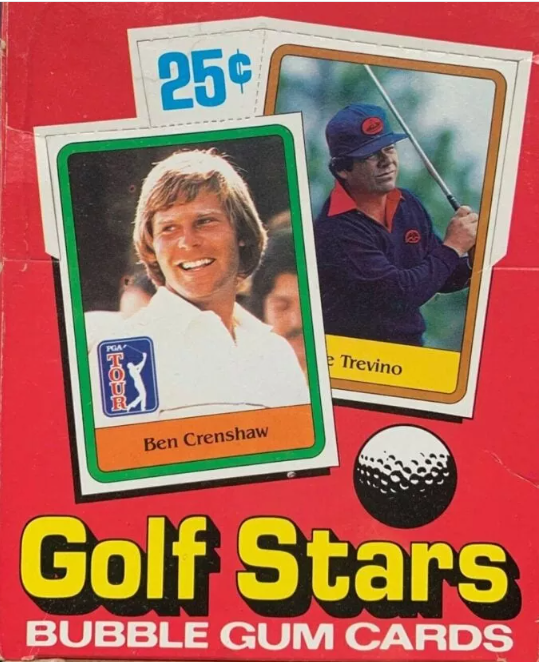In the world of collectibles, every sport has had its moment in the spotlight, from baseball and basketball to even wrestling. But there was a time when golf, one of the oldest and most revered games, lacked its official trading card representation. This all changed when Donruss decided to take a bold leap into uncharted territory by introducing the first officially licensed golf card set. The question remained, would this be a triumphant hole-in-one for Donruss or just a mere swing and miss?
Historically, golf was often seen as a leisurely activity reserved for gentlemen, not necessarily capturing the imagination of the masses. However, with the rise of media and the emergence of golf superstars, the fan base and allure of the sport expanded, making it ripe for collectibles. Surprisingly, the first post-War card set solely dedicated to golf didn’t see the light of day until 1981. Enter Donruss, the innovative game changer that dared to embark on this less traveled path.
For those new to the world of collectibles, Donruss may not immediately ring a bell. But it was this trailblazing entity that set foot on untouched terrain with just their second sports trading card release. This groundbreaking 66-card set wasn’t just a random collection; it was meticulously curated to honor the top 60 PGA Tour money winners from 1980. Additionally, it included six statistical league leader cards, perfectly aligning with Donruss’ ambition to diversify the sports card universe.
Despite Donruss’ success with their baseball series, the golf card expedition was not without its challenges. Released in June 1981, this series had smaller print runs, which may have initially seemed like a risky move. However, with visionary foresight, Donruss aimed to familiarize the younger audience with the sport’s leading figures and educate them about the detailed PGA statistics program.
Donruss left no stone unturned in packaging this collection. Each card came enclosed in a vivid red box, adorned with a quintessential golf ball graphic, prominently showcasing legends like Ben Crenshaw and Lee Trevino. This set undeniably shone with golfing giants; however, it was not exempt from quality shortcomings. Many enthusiasts felt that the quality was somewhat inconsistent, marred by prevalent centering issues, leading to some cards appearing “sliced” right out of the packs.
But the beauty of this collection transcended these technical hiccups. It was all about the stars that these cards brought into our hands and homes. Discussions sparked around Tom Watson’s unusually casual appearance or the unwavering concentration on Jack Nicklaus’s face as he played. These anecdotes made the set memorable for fans, even more so than the aesthetics.
In today’s world, where card grading has become an art form in itself, cards like Nicklaus’s in top-notch condition can command prices ranging from $300 to a whopping $5,000 or more, thanks to meticulous evaluations by the Professional Sports Authenticator (PSA).
Interestingly, the subsequent 1982 Donruss series followed the same footsteps as its inaugural counterpart, albeit with limited new introductions. Consisting of the same number of cards, the set introduced rookies like Freddie Couples and Andy North, making it less diverse than its predecessor. As a result, collectors tended to favor the original 1981 series.
Donruss’ bold venture into combining a nascent card market with a revered sport set the stage for the resurgence of golf cards in the late ’90s and early 2000s. Giants like Upper Deck capitalized on this renewed interest, riding the wave of rising stars, notably Tiger Woods.
While Donruss’ initial golf cards may not have been flawless, they undeniably laid the groundwork for the sport’s presence in the collectible space. Their audacious move gave birth to a market that celebrates golf’s legends and moments in the form of tangible memories. Thus, even if Donruss didn’t score a perfect ace with their first golf card endeavor, their pioneering spirit unquestionably warrants applause, for they embarked on a journey that led to the creation of a thriving sports card niche.

